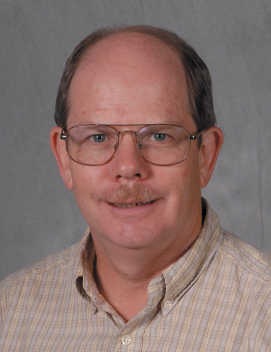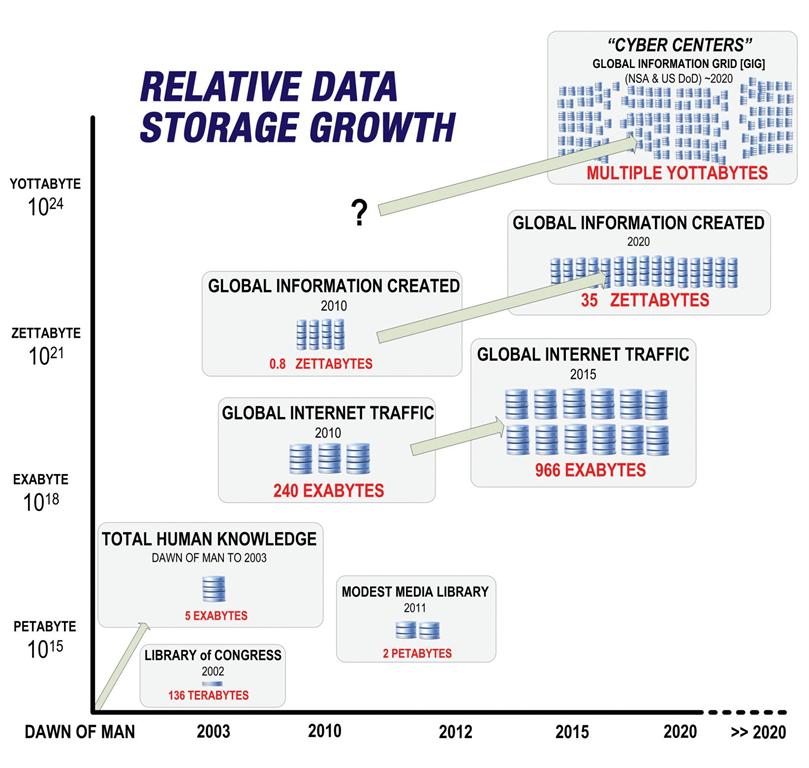Increasing Storage Capacities With Nanotechnologies

Karl Paulsen
PROBABLY A DISNEY CRUISE -- Despite the lack of enormous technological advances in the storage and server space in 2012, big changes are still expected for the remainder of this decade. It wouldn’t take a rocket scientist to expect that servers and storage devices will be more powerful than ever before. However, when you combine those expectations with visions of the cloud, then add mobility and virtualization to the mix, you’ll see yet another paradigm shift emerging in just how the IT and storage universe connects and functions.
From the storage perspective, some believe that spinning hard drives will be on their way out from those datacenters built and managed directly by corporations for their own uses. Trends indicate the transitions will include the integration of flash memory coupled through gateways to the cloud that will result in near-total virtualization (i.e., the sharing of resources not physically located in the datacenter). Cloud-based compute servers and infrastructure support systems seem to be the upcoming direction for large scale data management. Nonetheless, the hard drive is not going away in the next decade—so where will the HDD be headed; and what’s in store for storage in the next few years?
PHYSICAL MEDIA NOT DEAD YET
Desktops used by individuals, mobile notebooks and PC-laptops will continue to employ magnetic spinning disk drives as their primary local storage, with SSD and flash memory cache used to improve performance. Backup systems, especially for those smaller 100–200 person organizations, will most likely continue using linear tape-based media. The notion of optical storage for backup or archive, either DVD or Blu-ray, is waning, even though the medium is less susceptible to physical destruction.
For those who feel “tape is dead,” echoing statements of 25–35 years ago, there are continued arguments in favor of tape, at least for the foreseeable next decade. The shear volume of data being accumulated cannot possibly reside on optical media, which in turn renews the question “should we back up to disk, disc or to tape,” a statement appropriately rebounded with “now we just go to the cloud.” From the disc vs. tape capacity perspective, a single LTO-6 linear tape provides 2.5 TB native (uncompressed) data. It would require upwards of 128 Blu-ray discs for the equivalent storage capacity—essentially taking optical storage as a backup system out of the equation for anything other than the personal workstation or small-scale backup applications.
To create a cloud storage environment, myriad sets of spinning disks and servers are necessary. Cloud systems (public or private) may employ linear tape backup depending upon their architecture or the provider. Service level agreements (SLAs) between cloud-service providers and customers set the degree of protection, availability of data, and backup priorities. Thus, the utilization of hard disk drives continues uninterrupted while storage alternatives are continually explored.
ENTER THE NANOWIRE
Validated in part by the momentous growth of the cloud, research continues on developing larger capacity drives with higher performance parameters that can support a commodity provisioned service platform. The physics of the magnetic spinning disk govern the performance, capability and reliability of this tried and true storage medium. Current technologies in storage physics make it possible to put upwards of 3, 4 and 5 (or more) TBs of storage on a single HDD format.

Fig. 1: The relative scale of data accumulated and its anticipated storage requirements since the dawn of time. A yottabyte, which is a thousand-thousand-thousand petabytes, won’t seem like such a large number in a few short years. [Sources include IDC, TechCrunch, Berkeley Education, Wired, and the DoD/NSA (Global Information Grid)].
(Click to Enlarge)
To reach beyond these limitations, advancements in storage capabilities find scientists looking at using nanotechnologies to devise new surface-density improvements that could see huge storage capacity increases per unit disk drive. The nanoscientists’ work, which came from Ireland, the University of Wisconsin and Intel, involves the discovery of new fabrication methodologies used for creating large-area arrays of nanowires through the directed self-assembly (DSA) of block copolymer nanopatterns. Additional research from the University of Texas Austin and drive manufacturer HGST (formerly Hitachi Global Storage Technologies, now a wholly owned subsidiary of Western Digital) have taken the DSA characteristics of block copolymers to create a new type of drive, increasing storage capacity by five times that of current models.
One of the prime issues around increasing disk drive aerial density (i.e., the number of bits per square inch of storage surface) is the impact from the magnetic fields between the “dots,” those polar areas that determine the state of a bit. Complications in keeping these dots isolated has a residual influence on how many “bits-per-unit-area” can be achieved. Simply stated, the new nanotechnology employing block copolymers makes it possible to fabricate a disk surface so that there are no magnetic fields interfering with these between the dots regions. In turn, this allows the dots to be placed closer together, thus increasing the aerial density.
The commercial viability of this discovery is proving within the boundaries of today’s manufacturing processes. Scientists believe they have found the processes will actually improve manufacturing yields and increase productivity.
In an era where the amount of data being accumulated at all levels of organizations (Fig. 1), whether in moving images and media or the daily collection of information from hundreds of thousands of web pages hourly; we need to consider all the factors associated with retaining that information. This equation balancing involves packing more per unit space while maintaining (or reducing) the demands on the eco-system overall. There becomes a point where the requirements for power, cooling, and physical space necessary to store all this data will reach a breaking point—at which time every generator of data faces new decisions that are far more outreaching than the physical capacities of a disk drive. Stay tuned, the 25 TB HDD is on its way!
Karl Paulsen, CPBE and SMPTE Fellow, is the CTO at Diversified Systems. Read more about storage topics in his most recent book “Moving Media Storage Technologies.” Contact Karl atkpaulsen@divsystems.com.
Get the TV Tech Newsletter
The professional video industry's #1 source for news, trends and product and tech information. Sign up below.

Karl Paulsen recently retired as a CTO and has regularly contributed to TV Tech on topics related to media, networking, workflow, cloud and systemization for the media and entertainment industry. He is a SMPTE Fellow with more than 50 years of engineering and managerial experience in commercial TV and radio broadcasting. For over 25 years he has written on featured topics in TV Tech magazine—penning the magazine’s “Storage and Media Technologies” and “Cloudspotter’s Journal” columns.
